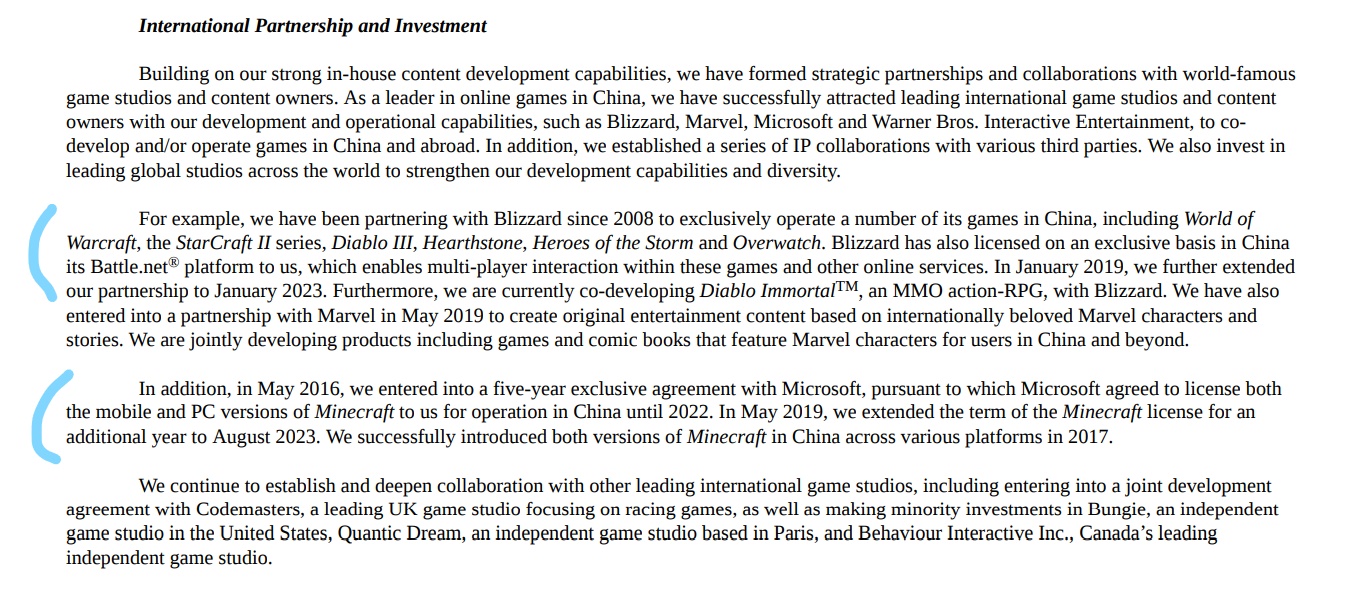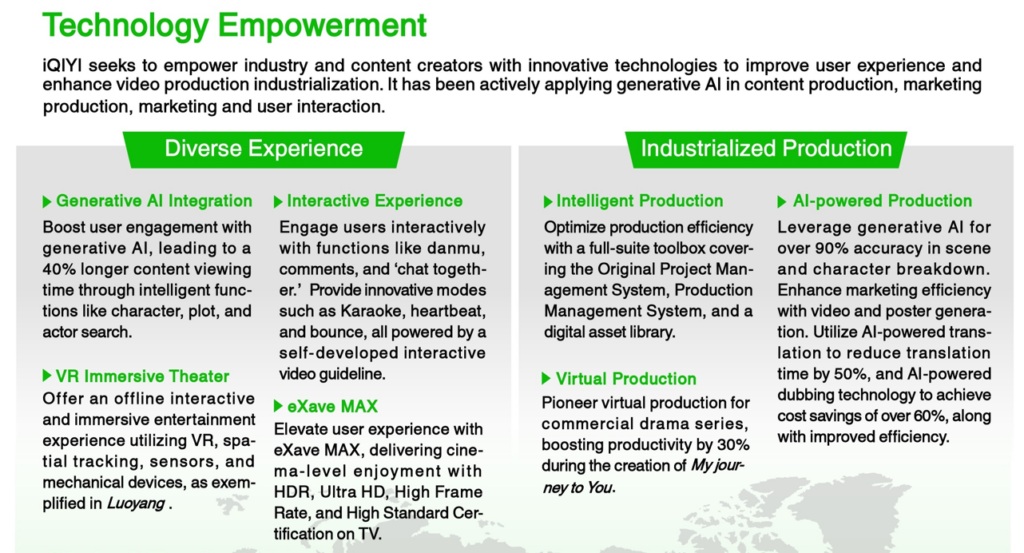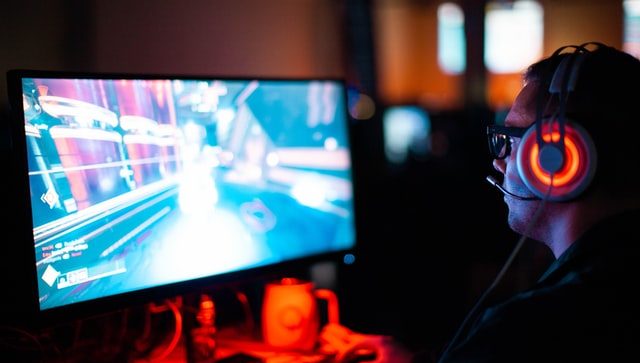I’m traveling in China and have been digging into the intersection of GenAI and gaming. And that really means looking at two companies, Tencent and NetEase. Here are my working conclusions:
- Gaming is already the most powerful user experience. GenAI is going to make it more so.
- Tencent and NetEase have the financial and tech resources to transform gaming with GenAI. Most other gaming companies do not.
- The most exciting use cases are Intelligent NPCs and Combat Robots (discussed below).
- The internal GenAI productivity tools are really interesting when it comes to the production process for games.
I mostly want to talk about NetEase. For those who aren’t familiar with this company, here are the basics.
The History of NetEase (NTES)
NetEase was in the first wave of China’s internet companies. Everyone thinks digital China began Tencent, Alibaba and Baidu in 1998-1999. But that was actually the second China internet wave. The first wave (the one Jack Ma missed) was Sina, Sohu, NetEase. Plus some other portal companies. Most were pretty much copies of Yahoo.
NetEase was founded in 1997 by Ding Lei from Ningbo, Zhejiang. He was born in 1971 and went to college at the Chengdu Institute of Radio Engineering. He ended up working as an engineer at a local state department in Ningbo before moving to Guangzhou to work for enterprise software company Sybase.
In 1997, he founded NetEase. And by 2003, he was China’s richest person. He was also China’s first gaming billionaire. Note: He is also the guy that bought Elon Musk’s mansion in Bel Air.
NetEase began as Chinese language content site. Think Yahoo but in Chinese. They created lots of content webpages and tools. They had an email service (163.com) which I was still using just a few years ago. Although nobody really uses email that much.
Early Tencent was similar. They were doing content and tools as well. But they were mostly focused on their instant messenger tool QQ.
And both companies had a problem.
They were both in the free content and tools business. And digital advertising didn’t exist back then in China.
Their answer to that monetization problem was to offer PC gaming with lots of micro-transactions. That clever innovation turned out to be one of the best business models of all time.
- You let millions of Chinese consumers play games for free and then sell them small items that make playing the game more fun, such as skins, tools, avatars, weapons, etc. Being free encourages user and usage growth.
- These are digital items, which means they cost nothing to create. 100% gross profits.
- If you get enough volume (which China has), the micro-transactions can add up to sizeable revenue.
- And everything is prepaid by gaming cards, so you also have negative working capital.
It’s just a great model. And the advertising model also emerged over time as well. That’s great too.
NetEase mostly built from content to gaming. Tencent built more from messenger and social media to gaming. The Tencent model turned out to be more powerful. People love chatting with friends while they play. And messenger is really the ultimate internet utility.
But NetEase has always had a solid place as the #2 gaming company of China. That’s pretty great.
The Online Game Services Business Is Great
This is the main business by far.
Here is a pretty good description of the gaming business (from an older annual filing).


The evolution from PCs to mobile was significant for them. It meant NetEase goes through app stores. Another important factor is their licensed games. Their arrangement with Blizzard has been a key deal.

Gaming revenue in 2020 was 60B RMB. As of 2017, NetEase had +100 licensed and/or self-developed games for mobile and PC. The business model is roughly the same, with most revenue coming from games that are free to play but with paid items. There is also a time-based model.
If you look at their operating expenses over time, it’s pretty much about R&D and marketing. 
Overall, the financials look good. And have for a long time. And it’s just a really good business model.
Which brings me to GenAI.
GenAI Use Case 1: Increased Productivity in Game Production
In both of these use cases, I am talking about high quality, expensive games. These are the complicated, cutting edge games that require game engines and take many years to build. There are lots of smaller and simpler mobile games, but that is a different subject.
Like virtually every company, the first GenAI use case is internal workflows. Cause GenAI is awesome at these. And they can be done with risking the customer experience.
For game production, this can be standard stuff like storying writing. Dialogue writing. Marketing materials. Script analysis and so on. That is similar to what iQIYI was doing in the production of TV shows and movies. I wrote about that at.
iQIYI’s “tech meets entertainment” strategy is basically two things:
- Improving both the quality and efficiency of video production. For their own projects and increasingly at the industry level.
- Improving the user experience. Mostly viewers. But also, increasingly advertisers.
And their media relations team put out a slide with a great summary of this.

However, when you start producing games (especially Triple A games), this production process gets a lot more complicated. Using GenAI workflows to 3D models, build characters, and, of course, do coding. Fixed 2D movies you watch passively are much less complicated that 3D models the user interacts with.
One of the interesting questions is the types of foundation models used in gaming. NetEase is not building an entire AI tech stack. They are not designing semiconductors. They are not trying to build an foundation models that are used globally (like Alibaba and Baidu).
They appear to be using a MoE (Mix of Experts) foundation model. This is when multiple expert networks are combined. Each model type is usually specialized in specific areas. And individual game productions seems to use (or at least want) their own individual foundation models.
That’s really interesting.
Huawei and Baidu are very focused on taking generalized foundation models and then customized models from them. Using based on industry or specific situations (customer service). Then these are used to build apps.
However for advanced gaming, it appears that each game gets its own specific foundation model. Or at least each producer wants his/her own specialized foundation model. There appear to be no general models for the user experiences.
We’ll see. But that is an interesting situation.
GenAI Use Case 2: Intelligent NPCs and Combat Robots
This use case is much cooler. This about building “AI companionship” models. And there are two types:
Intelligent NPCs
NPCs have been getting more and more interesting. You can mess with them in games like Red Dead Redemption. And they keep getting smarter and more interactive.
This basically takes it to the next level and makes them intelligent. This requires giving them “custom memories”, so each NPC remembers your interactions. And can react differently based on each player, the situation and their past history.
However, these are mostly conversational. They are intelligent chatbots. So it’s more about having fun. It’s entertaining and emotional. But not part of the game play. That gets me to…
Combat Robots
These are not just conversational AI companions. They play the game with you. In battle games, these Combat Robots can play with you as your team. They can run with you and coordinate with you. And they are smar.t Or they can be on the opposing team.
I’ve heard that Tencent is really focused on this. It makes great sense for competition games. Arena games. And it really makes sense for matching skill levels. So you can play with and against players that are the right skill level. That really improves the the gaming experience.
***
That’s my current assessment. But I’m going to dig more into this.
One last point.
Porter’s 5 Forces Is a Problem for Triple-A Gaming
Gaming has an interesting industry structure. It’s more complicated than ecommerce. And it’s usually not a platform business model. It’s closer to traditional media and entertainment, but with an important power dynamic between content creation and distribution.
Think about Porter’s 5 Forces for NetEase.
Buyer Power?
- Gaming is arguably the most powerful and engaging form of consumer media. Gamers love their games. It can be totally immersive. There are entire communities discussing the popular games and creating additional content and communities for them. People even watch videos of other people playing their games.
- And the gaming companies are masters at creating addictive, engaging and habit-forming behavior. It makes other types of media (music, movies, television, books) look simple and shallow in comparison.
- Distributors, channels and stores can also have power. Cable companies control physical distribution for television. But most of gaming is intangible. The console makers have some power. App Stores definitely have distribution power. In many cases, social media platforms have distribution power.
- The shift from prepaid, expensive games ($50) to the freemium model online has really made gaming more powerful. It has dramatically expanded consumption.
- The shift from solo-player to multiplayer has also increased demand-side engagement.
Supplier Power?
- Complicated, advanced games have traditionally had blockbuster economics. A small number of games get most of the attention and a relatively small number of franchises, controlled by developers, have tremendous market power.
- The cost to develop such leading games is very high and risky. The licensing of top games can also be expensive. But successful game franchises can last for decades.
Substitutes, New Entrants and Rivals?
- There are endless substitutes to playing games. Reading books, watching videos, listening to music, etc.
- And in China and other places, there are pirated copies available.
Finally, keep in mind, the government is a significant force in this industry in China. Foreign games require government approval. And all domestic games are evaluated for “appropriate” content.
There are just a lot of significant players in the gaming industry with significant power.
And it gets worse.
- The technology of gaming keeps advancing.
- New types of game technologies (GenAI, VR, multiplayer, etc.) keep emerging.
- New business models are also emerging (freemium, advertising based, subscription, etc.)
- The quality keeps improving. The bar keeps getting raised.
- There are seismic technology changes on the horizon:
- Games are becoming social. Roblox is more of an online community than a game.
- Games are becoming ecommerce. Events, like concerts, are being added.
- Gaming is incorporating gambling psychology and economics. Online gaming environments are starting to look a lot like Macau and Las Vegas.
It’s pretty daunting.
I think this is why so much attention is paid to casual games. It shifts the business away from the blockbuster economics of complicated games. It means more gaming options and less dependence on staying on the technological frontier. Casual gaming is a lot more like an audience-builder platform model (like YouTube).
What Are the Competitive Advantages of NetEase?
When I first looked at NetEase years ago, I wrote in my notes “great but fragile”.
Mostly because of the previous list of 5 forces issues. I thought the revenue was too dependent on the popularity of certain games. That there were tooo many technology changes happening, which meant lots of required spending and less predictable popularity and revenue.
But NetEase definitely has lots of competitive advantages. You can see them in the financials, market share and ROIC. There are 5 competitive advantages that jump out at me.
- There are two revenue and demand-side competitive advantages:
- Share of the consumer mind. This is mostly within certain games that just command tremendous attention by users. People really love some games. There is not as much of this at the channel level. There are also some switching costs.
- Direct network effects in multiplayer gaming. The more people that play these games, the better it gets. MMORPG, Battle Royale, esports and so on all benefit from this. And it is even more powerful when it is your friends and colleagues, not strangers.
- There are two cost and supply-side competitive advantages:
- Purchasing economies of scale. The bigger companies (NetEase and Tencent) are in a much stronger position for getting games on better financial terms. This is one of the places where Tencent has a real advantage over NetEase, but I think the government may limit their ability to exercise it.
- Economies of scale in the fixed costs of content and IT. Licensed and in-house game development are major fixed costs that NetEase and Tencent can spread out over a large user base (relative to smaller competitors).
- State-granted advantages. This is not a small thing. NetEase is shielded from the international gaming companies. And when popular Western games like Call of Duty want to enter China, they need to go through Tencent, NetEase or other. This is a great government-granted advantage.
Those are all good.
Final Thoughts on NetEase and Gaming
There are a few strategies I really like in gaming (in terms of competitive strength).
One strategy is just to have popular game franchises. A developer that owns Call of Duty or Red Dead Redemption is like a studio owning the Avengers. That is just really valuable IP that can last for years, if not decades. This can be super profitable. It’s just really hard to get one.
A second strategy I like is “localization and immersion.” I like gaming channels, platforms and distributors that have big consumer bases and lots of engagement where they have the most interactive and immersive games. The immersive, social and intensive multiplayer games (MMORPG, battle royale, esports, etc.) just really capture demand and engagement.
And I like when these companies also localize the content, advertising and partnerships for their markets. This puts the company in a stronger position against the popular game developers. I have cited Garena as having this strategy across the many markets of SE Asia.
But Tencent and NetEase have both done “localization and immersion” in China. They focused on the same highly immersive, multiplayer games and then localized them to the Chinese language and markets. Even today, NetEase says it does “Chinese language content and services”. It is in the localization business.
A third strategy I like, in theory, is casual gaming. Casual gaming looks more like a platform business model, with far more commoditized supply. This is still evolving but companies like Chinese Cocos are working on it. If consumers widely adopt casual gaming, it will decrease the power of the game developers and power will shift to the platforms. It will also reduce the cost structure and it will remove a lot of the technological spending and uncertainty.
A final strategy I like is big distribution power. That is basically the App Stores (Google Play, iOS), which have an international duopoly on distribution to smartphones. They are really gouging the gaming companies at 30%. Epic Games is fighting with Apple about this in the courts right now. In China, app stores are much more fragmented and the fees are also much lower. But it’s the same idea. Locking up distribution is a great strategy, if you can pull it off.
***
That’s my take on NetEase right now.
Cheers, Jeff
——
Related articles:
- Can Dingdong Win in Groceries and Specialty Ecommerce? (Asia Tech Strategy – Podcast 90)
- Can Foodpanda / Delivery Hero Get to Profitable Scale in On-Demand Food? (Asia Tech Strategy – Daily Lesson / Update)
From the Concept Library, concepts for this article are:
- Gaming and Game Engines
- GenAI
From the Company Library, companies for this article are:
- NetEase
———
I am a consultant and keynote speaker on how to accelerate growth with improving customer experiences (CX) and digital moats.
I am a partner at TechMoat Consulting, a consulting firm specialized in how to increase growth with improved customer experiences (CX), personalization and other types of customer value. Get in touch here.
I am also author of the Moats and Marathons book series, a framework for building and measuring competitive advantages in digital businesses.
This content (articles, podcasts, website info) is not investment, legal or tax advice. The information and opinions from me and any guests may be incorrect. The numbers and information may be wrong. The views expressed may no longer be relevant or accurate. This is not investment advice. Investing is risky. Do your own research.
